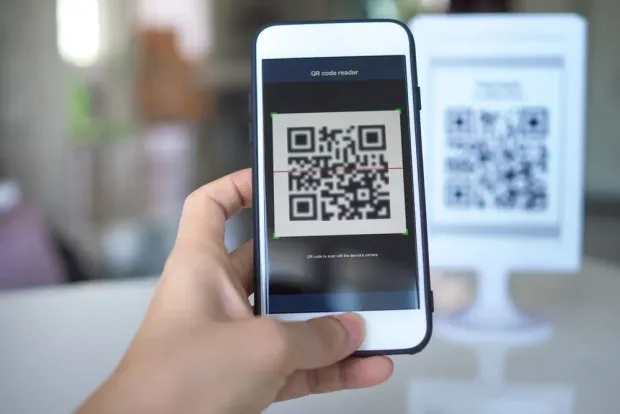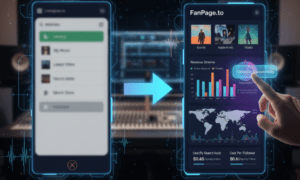Not every revolution begins with a headline. Some start quietly, with a square of black and white pixels on a café counter. In just a few years, QR codes have moved from pandemic stopgaps to serious infrastructure for payments, logistics, and marketing.
Their sudden rise isn’t about novelty. It’s about timing, simplicity, and the fact that they bridge the physical and digital worlds better than almost anything else.
The overlooked workhorse of digital transformation
For all the buzz about AI and blockchain, it’s easy to miss how many of today’s business interactions rely on something as plain as a QR code. Retailers use them for loyalty programs. Restaurants print them on tables to replace menus. Banks attach them to statements for instant payments.
Even museums, hospitals, and governments have quietly adopted them for forms, guides, and identification systems.
What makes this shift notable is not the technology itself — the QR code has existed since the 1990s — but its new role as the connective tissue of a digitized economy. When scanning became frictionless and customers got used to the camera doing the work, the code went from overlooked to indispensable.
Small tools with big effects
The global economy may run on complex systems, but adoption often depends on tools that ordinary people can understand. A QR code doesn’t need an instruction manual. Anyone can point a phone at it and get where they need to go. That ease has made it invaluable for small businesses trying to modernize without the budget or expertise of major brands.
Whether it’s a pop-up bakery taking cashless payments or a small gym updating schedules on printed posters, QR codes give owners the flexibility to adapt fast.
For businesses that need a secure and straightforward way to create codes for menus, payments, or digital campaigns, it’s now possible to use an online QR code platform designed for business use. The barrier to entry has all but vanished.
Why QR codes succeeded where apps struggled
A major reason QR codes are thriving is that they solve problems apps created. Customers don’t want to download yet another app just to see a menu or sign up for a newsletter. Scanning a code takes less than a second and doesn’t require storage space, permissions, or updates. That low effort is precisely what keeps users engaged.
For small merchants, the economics are also appealing. A printed QR sticker costs cents, while app development can run into thousands. The simplicity levels the playing field between large corporations and neighborhood stores. In many ways, the QR code has become the small business app — lightweight, fast, and universal.
The rise of connected packaging and smart labels
In retail, packaging is now more than a container; it’s a communication channel. Smart labels powered by QR codes let customers trace where a product came from, verify authenticity, or view instructions without printing extra materials. For manufacturers, it’s a cost-effective way to comply with growing transparency demands and reduce waste.
The European Union is even considering standardizing QR-based product identifiers to help track supply chains and recyclability. It’s a rare case where an old idea fits perfectly into a new regulatory landscape.
Security: the double-edged sword
Convenience always comes with risk. Fake QR codes can redirect to phishing sites or malware downloads. The problem isn’t the technology itself but poor implementation.
Businesses can protect themselves and their customers by hosting destinations on verified domains and regularly checking printed materials for tampering. Dynamic QR codes also help by allowing edits or deactivations if a link is compromised.
Several payment platforms now include encrypted data inside their codes, adding a layer of authentication. As adoption grows, expect browsers and phone operating systems to add more visible warnings when users scan unsafe codes — much like what already happens with suspicious web links.
Measuring behavior, not just clicks
What many companies find valuable about QR interactions is the data. Every scan can record time, location, and device type. That information helps small businesses understand when and where customers engage most. The feedback loop is faster than traditional campaigns and less invasive than detailed tracking cookies. It’s marketing intelligence wrapped in two dimensions.
For example, a restaurant might test different designs for its table stickers to see which layout earns more menu scans. A gym can measure how many members use QR-based class signups. Over time, the scan data paints a clear picture of what works, allowing owners to make decisions based on facts instead of assumptions.
The post-app digital ecosystem
QR codes have become part of a broader shift in how users interact with technology. Instead of opening dedicated apps for everything, people now expect the web to meet them halfway. A scan, a tap, or a short prompt should complete a task. That’s not just good UX design, it’s the foundation of a frictionless economy.
The future may bring new visual codes, embedded chips, or invisible markers, but the principle will remain the same: one quick action, instant result. For now, QR codes represent the perfect balance of simplicity and function. They’re not futuristic; they’re practical, and that’s why they work.
Final thoughts
The QR code’s success story isn’t about technology for its own sake. It’s about giving people control and convenience without barriers. While new tools will come and go, few are as universal or adaptable.
Sometimes progress doesn’t need a grand announcement, just a tiny square that quietly connects the world, one scan at a time.



































